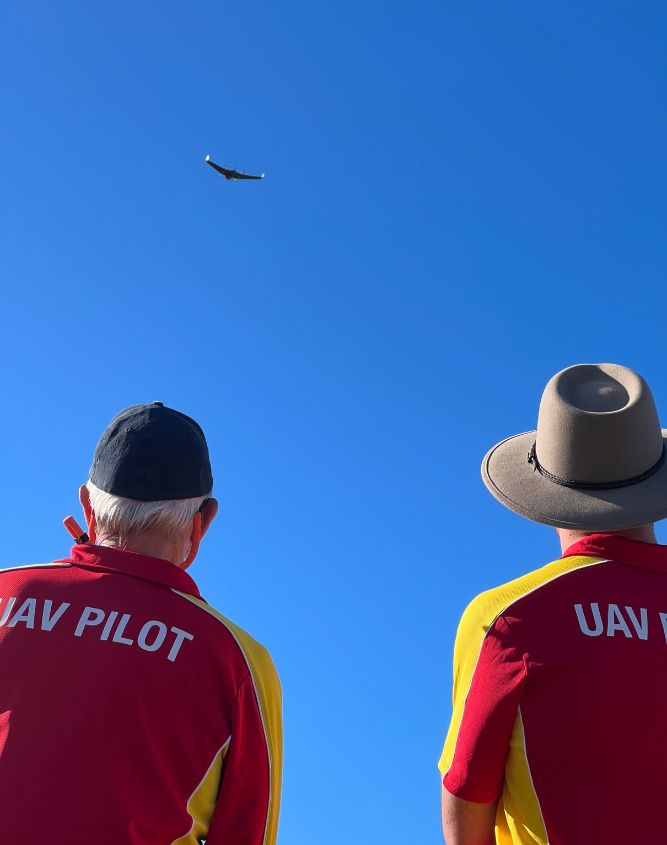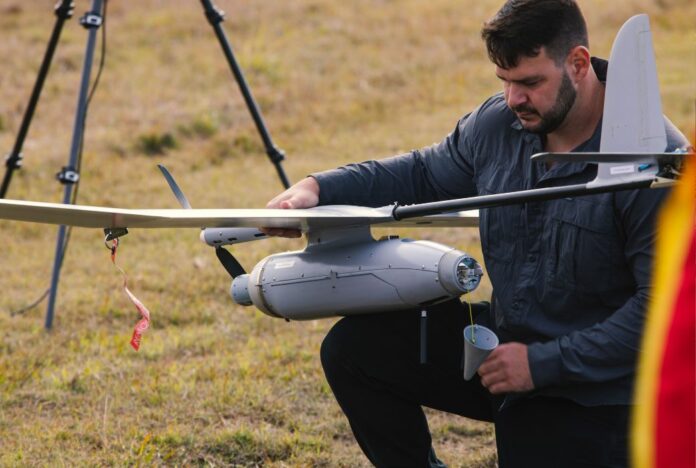A Newcastle business is finding new ways to help save lives in and around the ocean.
Using its long-range drones above the water, Aviassist is assisting NSW surf lifesavers in conducting rescues both day and night, in a range of emergency situations.
The Mayfield-based business recently took part in a “real life” training exercise at Evans Head, the far north coast of NSW.
Deploying four drones to locate a pair of mock hikers lost in scrubland, the equipment was successfully used to search and locate the duo beyond visual line of sight.
The testing included 16 different rescue scenarios, both on land and in the water.
It is hoped this will lead to the NSW government committing $1 million toward an 18-month Long Range UAV Project.
“This really is a gamechanger for surf lifesaving,” Aviassist managing director Ross Anderson says.
“Every second counts in these situations so if a drone can be launched with thermal cameras, a missing person, or group of people, can be found quickly and that can be the difference between life and death.”
SLSNSW is assessing if the technology could be rolled out permanently with Aviassist instrumental in assisting with regulatory approvals.
“The technology is advancing so fast at the moment and that allows for more area to be covered in less time, so it’s there to be harnessed,” says Mr Anderson.
“Surf Life Saving NSW’s UAV Pilots are picking it up quite fast – there’s an enthusiasm there to upskill and ultimately save lives.
“SLSNSW already has a fleet of more than 200 drones, making it the biggest of any surf lifesaving organisation in the southern hemisphere.
“Drones are more than tools, they’re teammates.”

Australian Uncrewed Aerial Vehicle Service (AUAVS), SLSNSW’s drone department, manager and chief remote pilot, Paul Hardy says the findings from the five-day trial and the months of emergency service, industry and regulator engagement would help inform decisions that had the potential to have a lasting impact on how drones are used in NSW.
“We’re really pleased with how the week went – opportunities to get so many likeminded people together and test some truly outstanding drones under controlled conditions don’t come around very often,” he says.
“This project allowed us to safely trial different types of drones that are capable of flying further and for longer, by operating beyond visual line of sight (BVLOS).
“The potential of this is massive as it can remove drone operators from dangerous situations and allow us to reduce response time to incidents and provide greater situational awareness in so many other scenarios.”
Aviassist recently oversaw the first AI (artificial intelligence) enabled drone flight in Australia.
‘Driven’ from a ‘smart’ docking station around Sydney Harbour, the drone was able to navigate itself around pylons and buildings and even detected the Harbour Bridge in the background.
It’s claimed the Dock can fly a drone in a five kilometre range and to within 11 centimetres of a foreign object.
An individual can monitor the drone’s stream, but it’s not necessary, and can be done from anywhere in the world.
Mr Anderson says he’s not surprised drones can now fly with almost no human involvement.
“It was only a matter of time,” he says.
“The drone was able to work out there were certain structures in the area and fly around them.
“It’s not autopilot, it’s AI.
“It was the drone summing up its surroundings and saying to itself, ‘hey, I can fly here, I can’t fly there’.”
For more stories like this:
- Wine experts to attend Hunter Valley’s Len Evans tutorial
- Coffee and Community bring the right blend to Little Millards
- Maitland named NSW’s fastest growing region
Get all the latest Newcastle news, sport, real estate, entertainment, lifestyle and more delivered straight to your inbox with the Newcastle Weekly Daily Newsletter. Sign up here.





